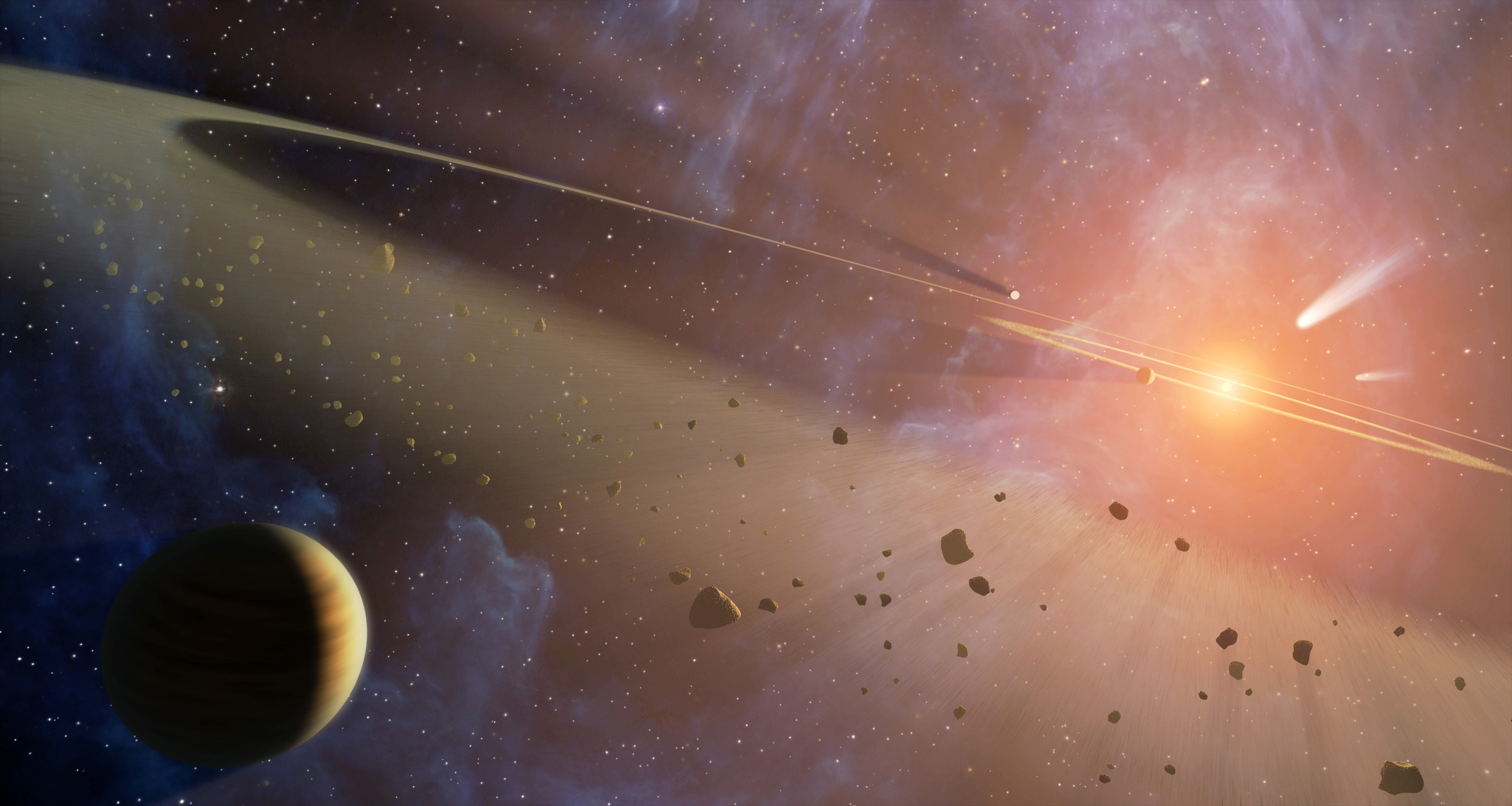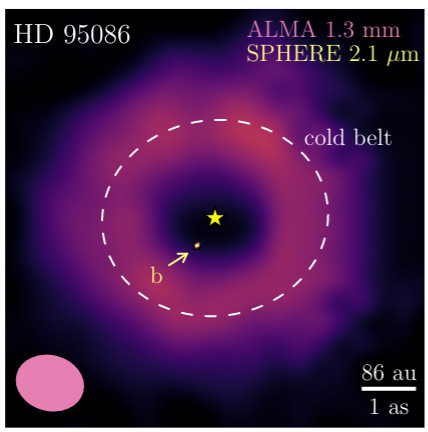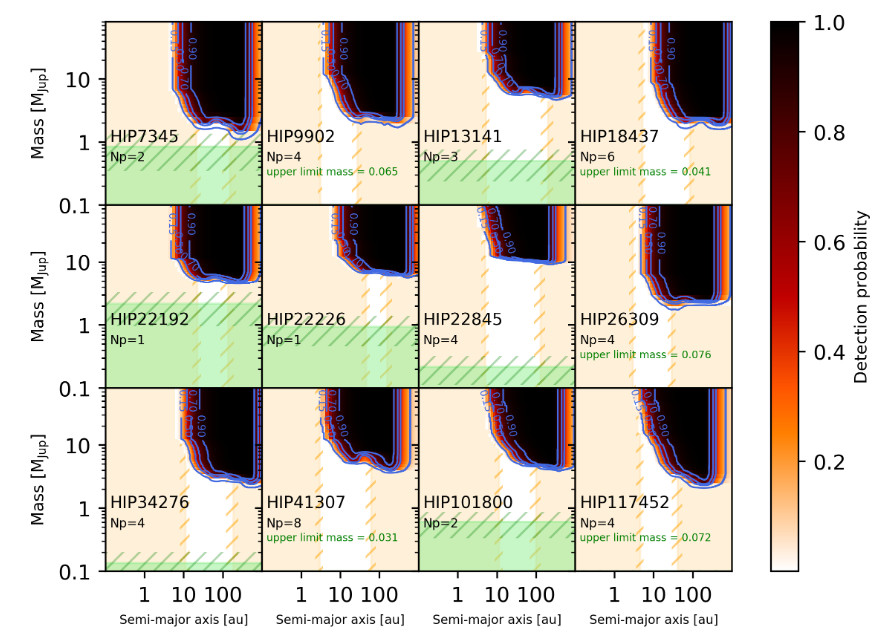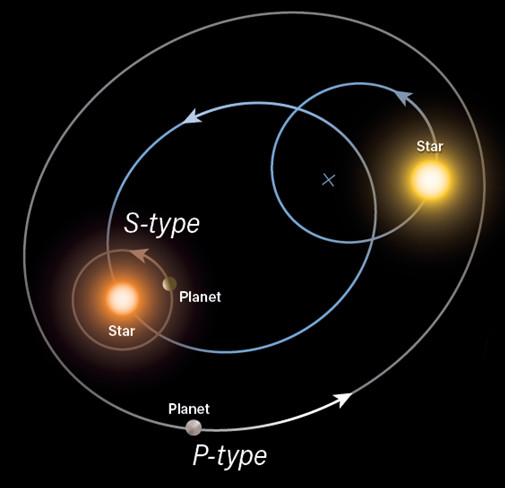Context and goals

Our vision and understanding of exoplanets have entered a new era in the last thirty years moving toward the fine characterization of the diversity of exoplanets, right up to the conditions for the emergence of life. Observations have shown that exoplanets are frequent, diverse in terms of physical properties, and distributed in architectures very different from the one of our Solar System. However up to now, the Solar System is the only planetary system for which we know that life exists. Understanding its formation, the role of giant planets in shaping planetary architectures (disks and belts) and inthe formation of telluric planets in habitable zone with a significant reservoir of water is of paramount importance to understand the emergence of life and of our origin. In this context, direct imaging is unique to discover and characterize young systems hosting giant planets and multi-belt architectures (asteroids and Kuiper-belts analogs) similar to what we see in the Solar System. By probing external regions beyond 5 to 10 au around young stars, this technique allows a direct study of the light emitted from the young exoplanets, of their spectral and atmospheric properties (including the accretion processes at play), in addition to their orbital properties. In particular, direct imaging offers a more global view of planetary architectures with a joint observation of giant planets and the disks in which they formed and evolve. In the last two decades, discoveries of emblematic planetary systems such as HR 8799, Beta Pictoris, HD 95086 or PDS 70 offered the rich opportunity to explore the diversity of young solar-system analogs, containing giant planets and circumstellar disks shaped with cavities and belts. These discoveries allow to connect at the same time the giant planet physical and orbital properties with the outer part of planetary systems, and potentially the inner regions where terrestrial planets might form placing our own Solar System origin in a broader context.
Young Solar System Analogs

Dusty debris disks around pre- and main-sequence stars are potential signposts for the existence of planetesimals and exoplanets. Giant planet formation is therefore expected to play a key role in the evolution of the disk. This is indirectly confirmed by extant submillimeter near-infrared images of young protoplanetary and cool dusty debris disks around main-sequence stars that usually show substantial spatial structures. With two decades of direct imaging of exoplanets already studied, it is striking to note that a majority of recent discoveries of imaged giant planets have been obtained around young early-type stars hosting a circumstellar disk. In this context, I have initiated with the first generation of planet imager, NaCo at VLT, then with SPHERE a systematic exploration of the close environment of young stars hosting debris disks. This work led to the successful discovery of the young solar system analog HD95086, and the exploration of the occurrence of giant planets in multi-belt architectures and in systems with and without disks in the course of the DUSTIES surveys.
-
The emblematic HD95086 system: Since 2013, and the discovery of a 4 Jupiter mass exoplanet in thermal imaging (Rameau, Chauvin et al. 2013), the HD 95086 planetary system has become a reference to investigate the processes of planetary formation and evolution, and to characterize young planetary architectures. The star HD 95086 A is a A-type star with an approximate effective temperature of 7750 K and a mass of 1.6 Solar mass, member of the Carina association and is 13.3 Myr old. HD 95086 hosts a double belt debris disk architecture, very similar to the one of our own Solar System, with an outer belt resolved by the Atacama Large Millimeter Array (ALMA) in the continuum at 1.3 mm. The inner, warm belt is located at 8 au, and the large outer, colder belt between 106 and 320 au. Intensive exploration have been and are carried out to explore the disk gaseous and dusty components, as well as to characterize the imaged exoplanet b or search for additional planet in this system.

-
The NaCo & SPHERE DUSTIES (Dusty, yoUng, and early-type STar Imaging for ExoplanetS) surveys: Since 2008, I carried out a dedicated survey with NaCo and more recently with SPHERE to search for giant planets around young dusty, early-type stars with indication of multi-belt architecture to maximize the chances of discoveries. The NaCo-DUSTIES survey led to to the successful discovery of HD 95086 b, but also included 51 Eri, a system around which was detected the first exoplanet with the new generation planet imager GPI, conforting our strategy. Our complete NaCo-DUSTIES survey of a total of 60 stars showed that the gravitational instability mechanism is likely inefficient or more complex than though with the formation of rather massive clump at wide (> 40 au) orbits evolving dynamically and/or fragmenting to smaller masses current not detected in direct imaging. For the population of close-in giant planets that would have formed by core accretion (without considering any planet - planet scattering), our NaCo survey marginally explore physical separations (< 20 au) and cannot constrain this population. With the arrival of the SPHERE planet imager at VLT, we decided to extend this survey in the context of a 3-years programme that was completed in 2020, and allowed us to image 30 young, nearby early-type stars hosting debris-disks never observed with such a sensitivity before. This survey enabled to place tighter constraints on the presence of giant planets in these systems, and confirm that gravitational instability forming massive clumps at wide orbits is not compatible with the occurrence og giant planets imaged today.
Extreme planetary architectures

Although the majority of exoplanets discovered so far orbit single stars, planets are now scrutinized in multiple stellar systems, either as circumstellar planets orbiting one component of the binary (S-type) or as circumbinary planets (P-type). Originally, planets were rapidly found in close spectroscopic binaries (like Gliese 86, S-type), confirming that circumstellar planetary systems could form and survive in such a hostile environment (binary separation < 20 au, i.e. with a star at roughly Uranus’s position). Dedicated strategy have been used to search for circumstellar planets in binaries in radical velocity. The first circumbinary planets (P-type) have been identified by Kepler (Kepler-16b). In the context of planetary formation theories, planets in binary systems are particularly interesting for testing the predictions of the planetary formation and evolution processes, from the individual or statistical point of view. They enable us to understand how a perturber will affect the planetary system formation and dynamical evolution. AO-imaging surveys to search for planetary systems in binaries (S-type) with Anne Eggenberger rapidly enabled us to confirm that intermediate-separation (20 − 100 au) binaries are less likely to host a giant planet compared to single stars. This statistical result corroborated the theoretical prediction that multiplicity has a negative effect on planetary formation and evolution at less than 100 au. Dynamical simulations suggest that stellar binaries would even favor the formation of Hot Jupiters via Kozai interactions and explain their spin-orbit misalignments. Therefore, extreme planetary systems in binaries (S-type) with small semi-major axes (< 20 au) offer an ideal opportunity to characterize the dynamical impact of the binary companion on the inner circumstellar planet in more detail and test planetary formation theories in their extreme limits. This has been for years the main science driver of the Xtreme project to monitor with direct imaging (SOAR, NaCo, SPHERE), interferometry (Gravity) and radial velocity (CORAVEL, SOPHIE, CORALIE) the complex orbital configuration of these extreme planetary systems to simply understand how they could have formed and remained stable of time.
Publications
Publications fully related to the DUSTIES projects:
-
-
Lombart, M., Chauvin, G., Rojo, P., Lagadec, E., Delorme, P., Beust, H., Bonnefoy, M., Galicher, R., Gratton, R., Mesa, D., Bonavita, M., Allard, F., Bayo, A., Boccaletti, A. et al. 2020, Astronomy and Astrophysics VLT/SPHERE survey for exoplanets around young early-type stars, including systems with multi-belt architectures
-
Chauvin, G., Gratton, R., Bonnefoy, M., Lagrange, A. -M., de Boer, J., Vigan, A., Beust, H. et al. 2018, Astronomy and Astrophysics Investigating the young solar system analog HD 95086. A combined HARPS and SPHERE exploration
-
Rameau, J., Chauvin, G., Lagrange, A. -M., Boccaletti, A., Quanz, S. P., Bonnefoy, M., Girard, J. H., Delorme, P., Desidera, S., Klahr, H., Mordasini, C., Dumas, C., & Bonavita, M. 2013, The Astrophysical Journal Discovery of a Probable 4-5 Jupiter-mass Exoplanet to HD 95086 by Direct Imaging
-
Publications fully related to the XTREME Planetary Systems projects:
-
-
Chauvin, G., Beust, H., Lagrange, A. -M., & Eggenberger, A. 2011, Astronomy and Astrophysics Planetary systems in close binary stars: the case of HD 196885. Combined astrometric and radial velocity study
-
Chauvin, G., Lagrange, A. -M., Udry, S., & Mayor, M. 2007, Astronomy and Astrophysics Characterization of the long-period companions of the exoplanet host stars: HD 196885, HD 1237 and HD 27442. VLT/NACO and SINFONI near-infrared, follow-up imaging and spectroscopy
-
Eggenberger, A., Udry, S., Chauvin, G., Beuzit, J. -L., Lagrange, A. -M., Ségransan, D., & Mayor, M. 2007, Astronomy and Astrophysics The impact of stellar duplicity on planet occurrence and properties. I. Observational results of a VLT/NACO search for stellar companions to 130 nearby stars with and without planets
-
Lagrange, A. -M., Beust, H., Udry, S., Chauvin, G., & Mayor, M. 2006, Astronomy and Astrophysics New constrains on Gliese 86 B. VLT near infrared coronographic imaging survey of planetary hosts
-
Collaborators
DUSTIES team: Julien Rameau, Célia Desgrange, Maxime Lombart, Patricio Rojo, Anne-Marie Lagrange, Christoph Mordasini, Hervé Beust, Mariangela Bonavita, Matthew Kenworthy, Tiffany Meshkat
XTREME team: Hervé Beust, René Mendez, Constanza Villegas, Anne-Marie Lagrange, Philippe Thiébaut, Carlos Correia, Isabelle Boisse, Janis Hagelberg, François Bouchy, Anne Eggenberger, Stéphane Udry, Michel Mayor





